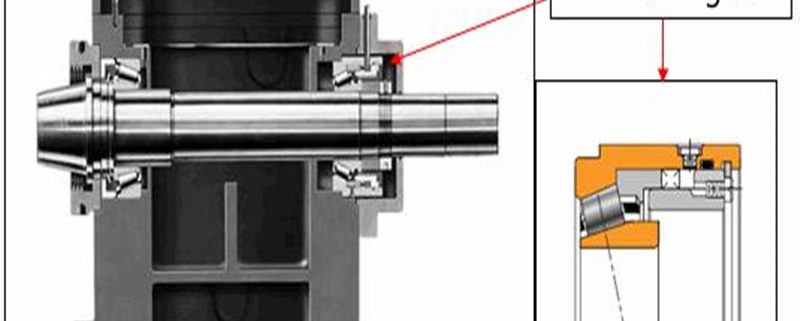Four type of bearings for machine tool spindles
In the machine tool industry, the spindle is a key component that uses high-speed rotation and pressure forming materials. With the advancement of modern machinery, the requirements for machining equipment are getting higher and higher, more precise and more durable. The bearing is a key component that guides and strengthens the movement of the main shaft. The use of high-quality bearings improves the working efficiency and reliability of the machine tool spindle, thereby increasing output and reducing mechanical wear.
The demand for bearings in the machine tool industry
With the advent of CNC technology, people expect machine tools to be more accurate, efficient, and reliable than ever before. In order to remain competitive, machining companies are investing in high-quality bearings to ensure the highest equipment performance. The overall purpose of the spindle bearing is to improve and simplify the movement of the spindle to ensure the best machine speed and accuracy. Bearings affect the speed, rotation, vibration, accuracy, and temperature of the machine tool, thereby changing the quality of the final product.
Bearings usually consist of one or a series of rings with balls or other rolling elements that streamline the movement of the main shaft in the desired direction. According to the equipment and the required movement, the bearing can be designed to facilitate the movement of the main shaft on the transverse and radial shafts. They must be able to withstand the load pressure, temperature and high speed of the machine tool spindle.
Bearings used in machine tool spindles are divided into four categories. Each bearing design has some characteristics that make it very useful in certain applications. It is very important to understand the working principle of each bearing, so you can choose the best bearing for your equipment.
Angular contact ball bearings
Angular contact ball bearings are the most common spindle bearings. They are rolling bearings, consisting of one or more rows of rolling balls between concentric grooved rings. They are useful for both radial and axial loads in one direction, and their axial load carrying capacity is determined by the angle of contact between the load and the bearing. The larger the angle, the higher the carrying capacity.
Radial or deep groove bearings
In industrial machinery, radial bearings are rolling bearings, which are mainly used to carry bearings on radial shafts. Like angular contact bearings, they consist of an inner ring and an outer ring with rolling balls between the inner ring and the outer ring; however, radial bearings can carry loads in both axial directions, making them more versatile than angular contact bearings .
Roller bearing
Roller bearings enhance movement by using rollers instead of balls. They are mainly used to support radial loads and axial loads parallel to the shaft in one direction. They are very useful in medium and high speed applications, which can reduce friction and increase equipment speed.
Thrust ball bearing
Thrust ball bearings are designed to support heavy, high-precision thrust loads, providing very precise axial support parallel to the drive shaft, but almost no radial support. The rolling elements can be balls, rollers or needles, depending on the application. They are particularly suitable for applications such as propeller engines, which support the free and easy movement of heavy objects parallel to the shaft.
Decho is a professional supplier on angular contact ball bearing, deep groove ball bearings, roller bearings and thrust ball bearings. If you any of them, pls feel free to contact us by email info@tjdecho.com




